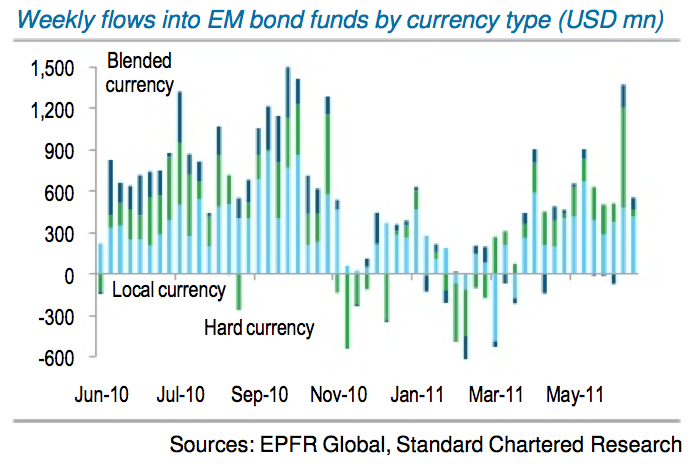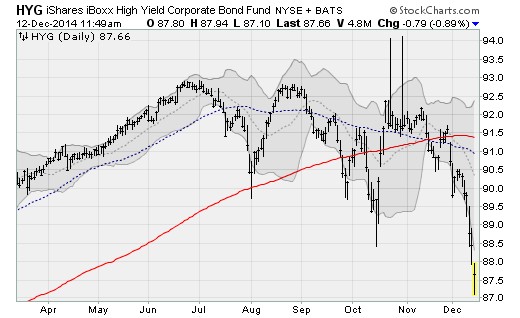When to Sell Bond Funds
Post on: 16 Март, 2015 No Comment

Best Reasons for Investing In and Holding Bond Mutual Funds
You can opt-out at any time.
Timing the market with stocks or stock mutual funds is a challenge, to say the least, and not generally advisable. However, a wise investor can easily find resources and information to guide them in making decisions to sell. But what about bond mutual funds? Don’t most investors hold bond funds long-term and focus mainly on the stock portion of their portfolio? Isn’t it best to buy bond funds when interest rates are falling and to sell them when interest rates are rising?
These are all common questions regarding the timing of buying and selling bond mutual funds. Perhaps the most difficult decision is to know when not to sell bond funds. As with any investment selection or timing, the investor must not allow short-term market conditions to lead their decisions and override their personal plans and objectives.
To know when to sell your bond funds or not, there are a few basics to learn or revisit prior to making that decision.
An investment objective, in regard to personal financial planning, is the purpose the portfolio serves for the individual’s financial needs. Once the objective is determined, it will then dictate what particular asset classes and security types are needed to fulfill the purpose of the portfolio and provide guidance.
For example: What is the purpose of your money? What do you want it to do? How much time do you have until you need this money? How much risk are you willing to take to achieve above-average returns? Do you want your money to grow or do you want to preserve it’s current value? The answers to these questions will help you arrive at your investment time horizon and risk tolerance. which are the fundamental elements of determining the asset classes you will use and the investments to serve your objective.
So in regard to the timing of selling bond funds, your investment objective should be the leading factor in deciding to sell, not the current economic or market conditions. For example, if your time horizon is longer than 10 years and your bond fund(s) and asset allocation are suitable for your objective, whatever expectations you have about economy or capital markets for the coming year or two are almost irrelevant.
So if the specific time horizon is 20 years, the investor need not be concerned with a one or two-year period of low or slightly-negative returns for the fixed income portion of their portfolio when asset allocation is the driving force of portfolio returns and diversification is crucial for balancing risk with reward.
Bond funds don’t work the same as bonds. With bond mutual funds, the investor does indirectly participate in the interest paid by the underlying bond securities held in the mutual fund. However, mutual funds are not valued by a price but rather a net asset value (NAV) of the underlying holdings in the portfolio. If bond prices are falling, the bond fund investor can lose some of their principal investment (NAV of the fund can fall).
Therefore bond funds carry greater market risk than bonds because the bond fund investor is fully exposed to the possibility of falling prices, whereas the bond investor can hold his or her bond to maturity, receive interest and receive their full principal back at maturity, assuming the issuing entity does not default. Equal and opposite, the bond fund investor can participate in rising prices, whereas the individual bond investor will not receive more than the principal investment (unless they sell their bond in the open market before maturity at a higher price than they purchased it).

Bond prices move in the opposite direction as interest rates. Here’s why: Imagine if you were considering buying an individual bond (not a mutual fund). If today’s bonds are paying higher interest rates than yesterday’s bonds, you would naturally want to buy today’s higher interest-paying bonds, or even wait until later, so you can receive higher returns (higher yield). However, you might consider buying the lower interest-paying bonds of yesterday if the issuer was willing to give you a discount (lower price) to purchase the bond. As you might guess, when prevailing interest rates are rising, the prices of older bonds will fall because investors will demand discounts for the older (and lower) interest payments. For this reason bond prices move in opposite direction of interest rates and bond fund prices are sensitive to interest rates.
There may be periods where stock prices are rising and bond prices are low or declining. But this is a natural part of a full market cycle, which will include various periods of different asset class leaders over a period of several years. Also, if interest rates are already low, abandoning bond mutual funds with the plan of moving that money to individual bonds or CDs can be a bad alternative, although with good intentions. For example, let’s say the economy is in the latter stages of a growth cycle and you believe inflation is heating up, which may lead the Federal Reserve to raising interest rates. This makes you a little nervous about falling bond prices. So you sell your bond funds for fear of a negative return over the next year or so and you buy a 10-year corporate bond yielding 3.00%. Now you’ve successfully avoided the negative return that is sure to come and you’ve locked in an annual yield of 3.00%. Great idea and timing, right? Not exactly.
If you look at long-term annualized returns, such as a 10-year period, for bond mutual funds you will find that most average around 5.00% or more. Now let’s say that your bond mutual fund declines in value by 2.00% in the coming year. In the second year, interest rates are still rising but your bond fund’s decline ends and you get a 0.00% return. Then, beginning in year three, a recession returns and the Federal Reserve begins lowering interest rates again. In years 4 through 10, your bond fund returns are slightly above average at 7.00%. This is still a 4.7% annualized return. However, if you had put all of your fixed income money into the corporate bond yielding 3.00%, you would be worse off 10 years later. Also, by virtue of dollar-cost averaging during the negative and low return years for the bond fund, you could have ended up with more than 4.7% average return.
In summary of all of the previous decision factors in selling bond mutual funds, most long-term investors can be better of simply holding their bond funds through any market condition. Therefore the best reason to change the allocation percentage to bonds is because your time horizon dictates it, not the current economic or market environment.
Other reasons to sell might include a change in fund manager r a prolonged period of under-performance, both of which would actually be a replacement and not an abandonment of bond funds.
Disclaimer: The information on this site is provided for discussion purposes only, and should not be misconstrued as investment advice. Under no circumstances does this information represent a recommendation to buy or sell securities.














